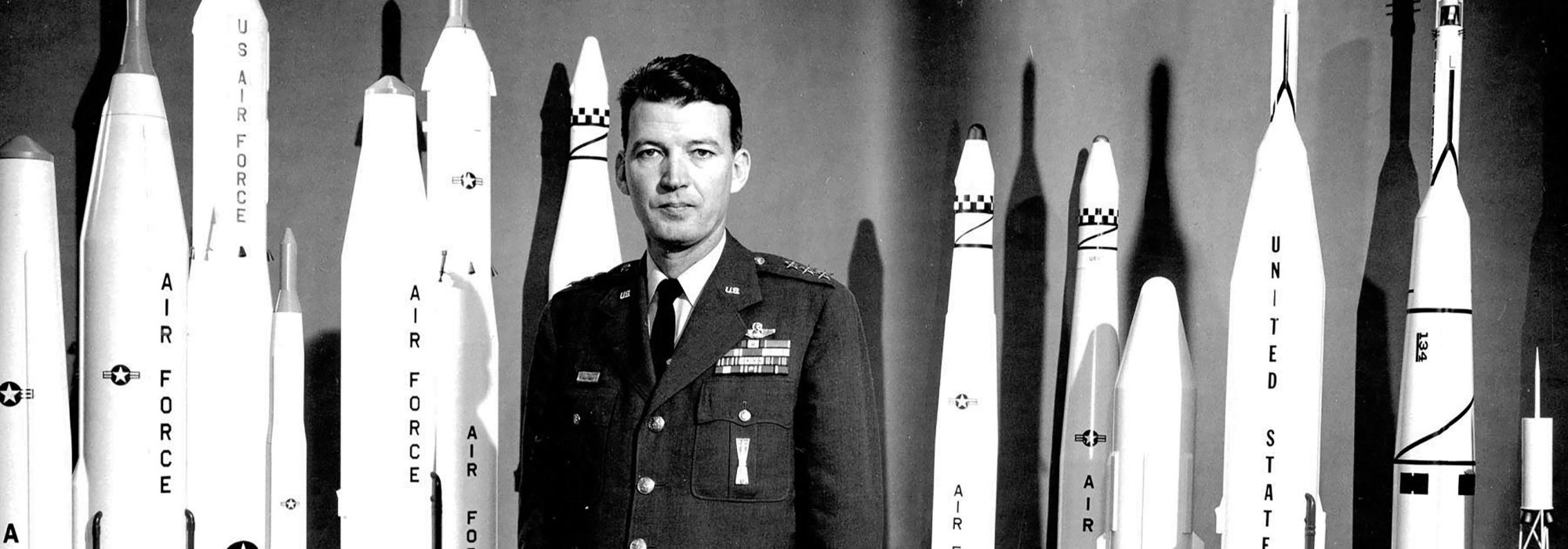| WESTERN DEVELOPMENT DIVISION | | |
| Gen. Bernard A. Schriever | July 1, 1953 | May 31, 1957 |
| AIR FORCE BALLISTIC MISSILE DIVISION | | |
| Gen. Bernard A. Schriever | June 1, 1957 | April 24, 1959 |
| Maj. Gen. Osmond J. Ritland | April 25, 1959 | March 31, 1961 |
| SPACE AND MISSILE SYSTEMS ORGANIZATION | | |
| Lt. Gen. John W. O’Neill | July 1, 1967 | Aug. 31, 1969 |
| Lt. Gen. Samuel C. Phillips | Sept. 1, 1969 | Aug. 24, 1972 |
| Lt. Gen. Kenneth W. Schultz | Aug. 25, 1972 | Aug. 28, 1975 |
| Lt. Gen. Thomas W. Morgan | Aug. 29, 1975 | April 28, 1978 |
| Lt. Gen. Richard C. Henry | April 29, 1978 | Sept. 30, 1979 |
| SPACE DIVISION | | |
| Lt. Gen. Richard C. Henry | Oct. 1, 1979 | May 1, 1983 |
| Lt. Gen. Forrest S. McCartney | May 1, 1983 | Sept. 30, 1986 |
| Lt. Gen. Aloysius G. Casey | Oct. 9, 1986 | June 23, 1988 |
| Lt. Gen. Donald L. Cromer | June 24, 1988 | March 14, 1989 |
| BALLISTIC MISSILE OFFICE | | |
| Maj. Gen. John W. Hepfer | Oct. 1, 1979 | Oct. 31, 1980 |
| Maj. Gen. Forrest S. McCartney | Oct. 31, 1980 | May 19, 1982 |
| Maj. Gen. Aloysius G. Casey | May 19, 1982 | Sept. 30, 1986 |
| Maj. Gen. Edward P. Berry Jr. | Sept. 30, 1986 | March 14, 1989 |
| SPACE SYSTEMS DIVISION (SSD) AND BALLISTICS SYSTEM DIVISION (BSD) | | |
| Lt. Gen. Donald L. Cromer (SSD) | March 15, 1989 | May 31, 1991 |
| Lt. Gen. Edward P. Barry Jr. (SSD) | July 8, 1991 | June 30, 1992 |
| Lt. Gen. Edward P. Barry Jr. (BSD) | March 15, 1989 | May 30, 1989 |
| Brig. Gen. Ralph G. Tourino (BSD) | May 30, 1989 | May 4, 1990 |
| SPACE AND MISSILE SYSTEMS CENTER | | |
| Lt. Gen. Edward P. Barry Jr. | July 1, 1992 | Nov. 16, 1994 |
| Lt. Gen. Lester L. Lyles | Nov. 16, 1994 | Aug. 18, 1996 |
| SPACE SYSTEMS DIVISION (SSD) AND BALLISTIC SYSTEMS DIVISION (BSD) | | |
| Maj. Gen. Osmond J. Ritland (SSD) | April 1, 1961 | May 13, 1962 |
| Lt. Gen. Howell M. Estes Jr. (SSD) | May 14, 1962 | Oct. 2, 1962 |
| Maj. Gen. Ben I. Funk (SSD) | Oct. 3, 1962 | Aug. 31, 1966 |
| Maj. Gen. Paul T. Cooper (SSD) | Sept. 1, 1966 | June 30, 1967 |
| Maj. Gen. Thomas P. Gerrity (BSD) | April 1, 1961 | June 30, 1962 |
| Lt. Gen. W. Austin Davis (BSD) | July 1, 1962 | July 18, 1964 |
| Maj. Gen. Harry Sands Jr. (BSD) | July 20, 1966 | June 30, 1967 |
| Maj. Gen. John L. McCoy (BSD) | July 20, 1966 | June 30, 1969 |
| SPACE AND MISSILE SYSTEMS CENTER | | |
| Lt. Gen. Roger G. DeKok | Aug. 18, 1996 | Aug. 12, 1998 |
| Lt. Gen. Eugene L. Tattini | Aug. 13, 1998 | May 25, 2001 |
| Lt. Gen. Brian A. Arnold | May 25, 2001 | May 20, 2005 |
| Lt. Gen. Michael A. Hamel | May 20, 2005 | May 16, 2008 |
| Lt. Gen. John T. Sheridan | May 16, 2008 | May 16, 2008 |
| Lt. Gen. Ellen M. Pawlikowski | June 3, 2011 | June 19, 2014 |
| Lt. Gen. Samuel A. Greaves | Jun 19, 2014 | March 22, 2017 |
| Lt. Gen. John F. Thompson | March 22, 2017 | |


